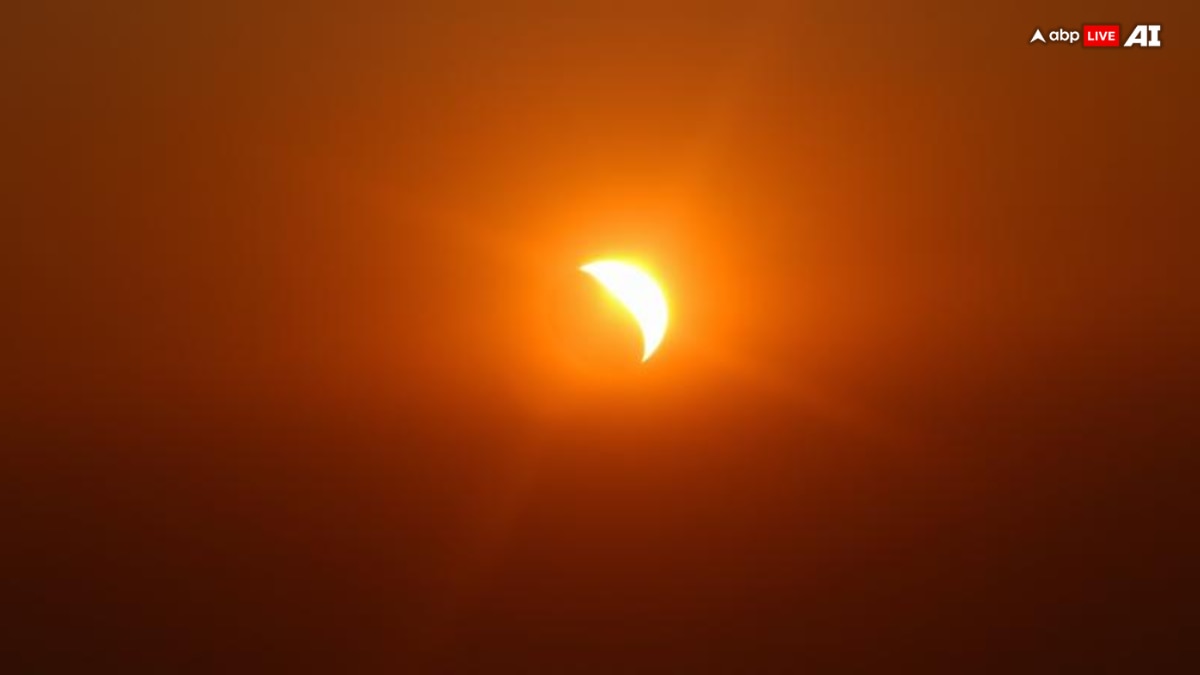<p>Skywatchers in many places of the Northern Hemisphere are being treated to the first solar eclipse of the year — a partial solar eclipse that is offering breathtaking views to millions. The astronomical event will unfold over several hours, offering a unique opportunity to witness the moon partially obscuring the sun. However, not everyone in the Northern Hemisphere will be lucky enough to catch a glimpse of the celestial event.</p>
<h2><strong>When And Where To Watch?</strong></h2>
<p>The eclipse will begin at 8:50 UTC (4:50 AM EDT) and end at 12:43 UTC (8:43 AM EDT), with its visibility varying by region. If you are in the southern hemisphere or in countries like India, Pakistan, Bangladesh, China or UAE, you can watch the live stream down below:</p>
<p><iframe title=”YouTube video player” src=”https://www.youtube.com/embed/j3T20T8k2h0?si=AYM3JK0j9ZIcf0VL” width=”560″ height=”315″ frameborder=”0″ allowfullscreen=”allowfullscreen”></iframe></p>
<h2><strong>Best Solar Eclipse Viewing Locations</strong></h2>
<p>The first solar eclipse of 2025 on March 29 offers spectacular viewing opportunities across the Northern Hemisphere.</p>
<p><strong>North America:</strong> In the northeastern parts of the US and Canada, the eclipse will coincide with sunrise, creating a dramatic visual of a crescent-shaped sun emerging on the horizon. The best views are expected in New Brunswick and northern Quebec, where up to 94% of the sun will be obscured. Check out <a href=”http://xjubier.free.fr/en/site_pages/solar_eclipses/xSE_GoogleMap3.php?Ecl=+20250329&Acc=2&Umb=1&Lmt=1&Mag=0″ target=”_blank” rel=”noopener”>this interactive map</a> to learn more about it.</p>
<p>Coastal Maine and New England will see up to 85% coverage, with Portland, ME, witnessing 64% at sunrise.</p>
<p><strong>Europe and Africa:</strong> Western Europe, northwest Africa, and parts of Russia will experience the eclipse later in the morning. For example, Greenland will see up to an 86% eclipse, while regions like London and Paris will witness smaller “bites” out of the sun — 30% and 23%, respectively, as per Space.com.</p>
<p>Greenland might see up to 86% obscuration, making it a prime location for observers, while Iceland’s Reykjavik will witness around 67% obscuration of the sun.</p>
<p>Cities like London (30%) and Paris (23%) will also get to experience some amount of the solar eclipse.</p>
<p>Northwestern Africa and Russia: Some regions in northwest Africa and remote areas in Siberia will also see the partial eclipse.</p>
<p>For precise viewing times at your location, tools like <a href=”https://www.timeanddate.com/eclipse/solar/2025-march-29″ target=”_blank” rel=”noopener”>Timeanddate.com’s Eclipse Calculator</a> can provide detailed information.</p>
<h2><strong>A Rare Celestial Event</strong></h2>
<p>What makes this eclipse particularly special is its depth and timing. As many as 814 million people are within the path of some level of obscuration of the sun, though only around 45,000 people in northern Quebec will experience an eclipse exceeding 90%. This makes it one of the most significant partial eclipses for the Northern Hemisphere in 2025.</p>
<p>Unlike total solar eclipses, where the moon fully covers the sun, this event will leave parts of the sun visible throughout. The moon’s central shadow narrowly misses Earth, creating a partial eclipse that stunning.</p>
<h2><strong>Safety First: How to View It Properly</strong></h2>
<p>While the celestial display is captivating, viewing it without proper eye protection can lead to serious injuries. Regular sunglasses are not sufficient; instead, use certified solar viewing glasses or solar filters for telescopes and cameras. The American Astronomical Society provides a list of approved suppliers for these safety tools.</p>
<p>Photographers aiming to capture this rare event should also equip their lenses with solar filters to protect both their equipment and their eyes.</p>
<h2><strong>Next Eclipse In Southern Hemisphere</strong></h2>
<p>This partial solar eclipse is just one of two such events in 2025. The next will occur on September 21 but will only be visible in the Southern Hemisphere. Notably, this marks the last purely partial solar eclipse until 2029, Space.com reported.</p>
World
Want To See The Year’s First Solar Eclipse? Don’t Worry! We Got You Covered: Watch Here
by aweeincm

Recent Post

Updated IPL 2025 Points Table After MI vs KKR Match, Orange Cap, Purple Cap
Mumbai Indians registered their first points in the IPL 2025 ... Read more

“Learn From South”: Raj Thackeray Weighs In On Language Row, Cites MK Stalin
The language battle from Tamil Nadu has found resonance in ... Read more

HAL Didn’t Transfer Sensitive Tech To Russia: Sources On NYT Report
A New York Times report wrongly claimed that Hindustan Aeronautics Limited – ... Read more

Bangladesh Asks For China’s “Extension” In Veiled Threat To Northeast India
Bangladesh’s interim government adviser Muhammad Yunus has tried to jab ... Read more